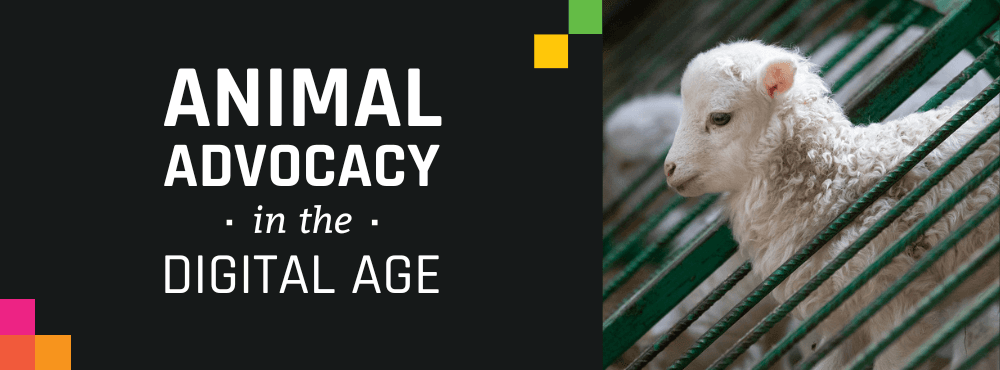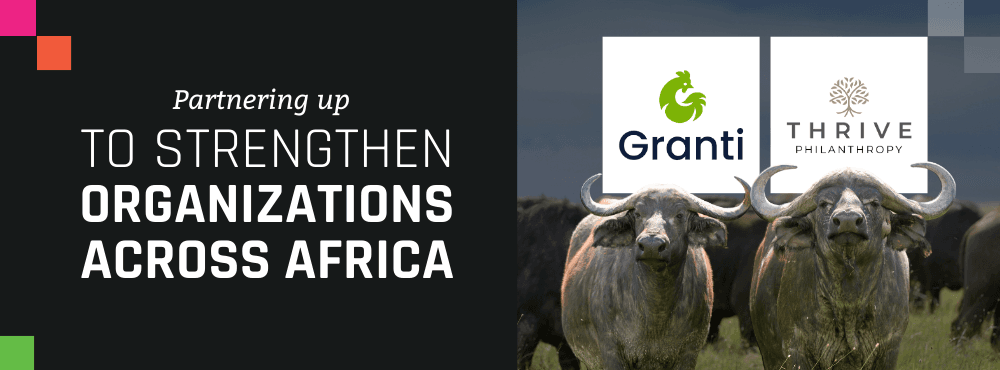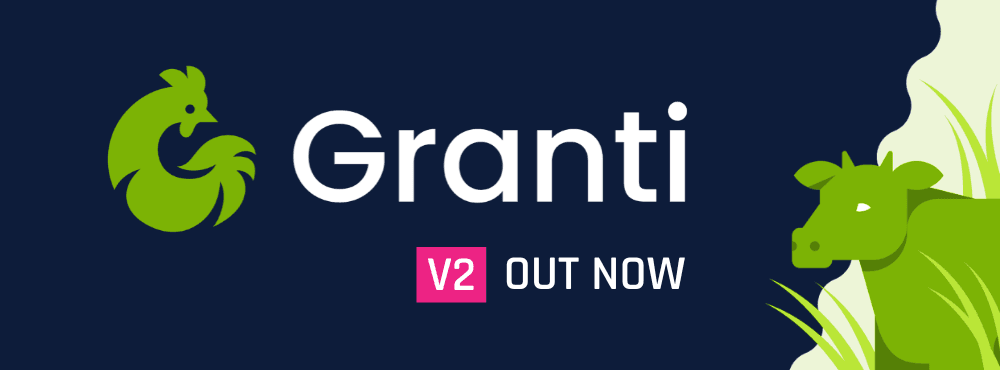
Are Animal Advocates Tech-Savvy? Insights From Our Movement
In this blog post, initially published by Faunalytics, we at Vegan Hacktivists delve into the results of our recent study about the movement’s current use of technology, including challenges, opportunities, and recommendations for different stakeholders.
Technology can be a game-changer for social movements, and the animal protection movement is no exception. Whether the work involves vegan outreach or persuading legislators to take action on fur bans, effectively harnessing technology tools and tracking metrics can take initiatives far. After all, captivating social media content, informative websites, fresh insights from audience data, and resilient cybersecurity can increase the reach and impact of advocacy.
However, very little is known about how advocates and organizations in our movement actually use technology and data in their work. What kinds of software do organizations use? How well do they use those tools and programs? What are some barriers to getting the most out of technology and data?
We set out to answer these questions and to highlight actionable solutions that could serve as the roadmap for our organization and the movement as a whole. Below, we summarize our research, highlighting key findings and recommendations, but you can also read our full report here. The report also contains details about the research method and study materials.
Our Research
In late 2022, we surveyed 114 organizations working within the animal protection movement. Most organizations operated in North America and Western Europe, but the study also included those who worked or were based in Latin America and Caribbean, East Asia and Pacific, Eastern Europe, South Asia, Sub-Saharan Africa, and the Middle East and North Africa.
Organizations conducted various types of advocacy, with policy change, creative advocacy, and vegan/vegetarian outreach being the most common focus. Other types of work included lobbying, research/program evaluation, investigations (e.g., of slaughterhouses), and humane education.
We asked one representative from each organization to answer questions about their organization’s use of technology and data, as well as challenges and needs related to using technology and data. Although “technology” and “data” are distinct domains, these terms were grouped together in some of the survey questions. We recognize that doing so may have obscured any differences in how the movement uses technology versus data. Indeed, our findings hint toward the need to evaluate the use of technology and the use of data separately in future research.
Key Findings
Workforce And Resources
Adopting technology can be costly and often requires specialized skills and expertise. Less than half of the organizations we surveyed had in-house tech teams, and those organizations tended to have a large budget and workforce. Regardless of whether they had in-house tech teams, most organizations (65%) relied on third-party contractors for technical support. When asked about challenges for adopting technology, sufficient staffing and levels of expertise were cited as the main problems. Among the 19 organizations that reported lack of physical equipment as a barrier to using technology, 8 operated in Sub-Saharan Africa and 10 had an annual budget lower than $25,000 USD.
We consistently found disparities such that organizations with more resources used technology and data more than those with fewer resources. However, increasing funding alone may not necessarily lead to prioritizing these tools: Only around 39% of organizations said that technology and data would be a top priority if, hypothetically, their annual budget doubled.
Challenges To Adopting Technology
![[Blog] Challenges To Adopting Technology](/_next/image?url=https%3A%2F%2Fimages.ctfassets.net%2Fa0em3uo7cuue%2F3sxqy1RtgNYk0Qvw0UYdT2%2Fa7b48e56fe2f4fdc0da93a29d3dc922d%2FScreenshot_2023-11-16_at_00.06.11.png&w=3840&q=75)
Website And Applications
Most organizations communicate and interact with their audience through websites and web or mobile apps. Nearly all organizations we surveyed (95%) had a website, but there were serious issues with many websites, including a lack of web accessibility for people with disabilities. Among organizations with websites, only one-fifth of them stated that their websites are accessible to both individuals with visual impairments and individuals with auditory impairments.
Organizations also likely recognized their challenges with building websites, as many organizations (57%) reported a strong desire for free web design services. Most organizations did not have a mobile app, but 32% said that they are considering building one in the future.
Social Media And Other Technology Tools
Which technology tools do organizations use? Social media was the most commonly used tool, with Facebook (88%) and Instagram (83%) taking the top spots. Only about 23% of organizations used TikTok. Other popular tools were those used for internal and external communication, such as email and virtual meeting software.
Most organizations recognized the benefits of using technology, with 83% reporting that technology tools improved the efficiency of their organization’s work. In addition, most organizations (72%) reported that using additional technology tools has the potential to improve their efficiency.
Compared to organizations with more resources, those with fewer resources were less reliant on technology, but they nevertheless expressed a desire for volunteer services that offer tech-related support. Specifically, 85% of the organizations with an annual budget below $250,000 USD said they would find such a service valuable.
Most Widely-Used Technology Tools:
![[Blog] Most Widely-Used Technology Tools](/_next/image?url=https%3A%2F%2Fimages.ctfassets.net%2Fa0em3uo7cuue%2F5Wg7b0BEIoreldprhNq0IB%2F1668314017c46acc6c130efeb49c02f4%2FScreenshot_2023-11-16_at_01.10.28.png&w=3840&q=75)
Most Popular Social Media Sites:
![[Blog] Most Popular Social Media Sites](/_next/image?url=https%3A%2F%2Fimages.ctfassets.net%2Fa0em3uo7cuue%2F21OSn05urs5oMoZhaGrhkE%2F738955eccfcc7a90e1023b69e0058c0c%2FScreenshot_2023-11-16_at_00.16.49.png&w=3840&q=75)
Data Analysis
Collecting and analyzing data can help organizations gain a wealth of knowledge about their impact and audience members. By identifying key metrics and drawing insights from their data, organizations can make well-informed decisions that lead to more effective and compassionate initiatives.
We found that the organizations in our study leveraged data. Most organizations (93%) collected data, and 86% of these organizations analyzed their data. They primarily analyzed their data to describe (i.e., to understand what happened) and to diagnose (i.e., to understand why something happened). For example, an organization could analyze their website data to describe which pages were most visited and to diagnose why people are not signing up to their newsletter.
Although most organizations collected and analyzed data, some organizations, particularly those with fewer resources, were not confident in their data analysis expertise. Among the 15 organizations that did not conduct any data analysis, more than half of them (53%) said that they would find a free data analysis service valuable.
Security Measures
In addition to using technology and data to enhance their work, it is important for organizations to protect account information and sensitive data. Only a small number of organizations experienced security problems like cyberattacks, but these incidents have serious consequences, including loss of accounts and data, as well as more long-term repercussions for an organization’s reputation and trust with its stakeholders. Fortunately, most organizations adopted sufficient password protection measures, but a small percentage of organizations (14%) were not using any measures to secure passwords.
Actionable Steps To Build A Tech-Forward Movement
To accomplish our goals in improving the lives of animals, we all have a part to play in building a movement that effectively leverages technology and data. We encourage everyone to explore the following recommendations:
Support Organizations With Limited Resources: Donors and funders should prioritize supporting organizations with limited resources to alleviate some of the barriers to leveraging technology and data. We recommend prioritizing organizations that lack access to basic equipment, have small budgets, rely heavily on volunteers, or operate in Sub-Saharan Africa. Since funding alone is not enough for organizations to adopt technology, funds should also be directed to building tech- and data-related skills to help fill gaps in the form of training, skill-development resources, and expert assistance.
Provide Access To Free Tech-Related Services: Free tech-related services, including website design and data analysis, should be offered to organizations with limited resources. These services are opportunities to share and advise on best practices and can also focus on improving the accessibility of websites and mobile applications. Capacity-builders with tech-related expertise could deliver group workshops and hold one-on-one consultations to offer these services.
Prioritize The Mobile (Web) Experience: Given the increasing use of mobile devices, organizations should strengthen their presence and reach by building mobile-compatible websites and mobile applications. Website experiences on mobile devices should be prioritized, with relevant information being readily available and accessible.
Expand Your Social Media Strategy: Organizations should also consider expanding their reach by using different social media and communication platforms, such as TikTok, to engage younger audiences. By having a presence on a wider range of platforms, organizations are more likely to increase brand awareness, gain traction with projects and campaigns, and recruit volunteers.
Educate On Best Practices For Security: For capacity-builders, it’s important to provide organizations with effective and low-cost measures to secure data and accounts. This will help protect the movement from malicious actors. Support in this area could take the form of webinars, workshops, or individual consultations that convey the importance of digital security and provide actionable next steps for preventing cyberattacks, managing passwords, and protecting sensitive data.
We hope that this research provides invaluable insights about how technology and data are used in the animal protection movement, as well as what barriers exist for using technology and data, specifically within our movement. Overall, we found that the movement takes advantage of the power of technology and data in many ways. However, we also found that there are opportunities for growth and improvement. We hope that our research helps to kick-start the conversation about what it means to have a tech-forward and data-driven movement and encourages everyone to think about tangible steps in their everyday work.
As digital tools continue to evolve and change the way we operate, we look forward to the adoption of cutting-edge technology, as well as future studies that explore how they may intersect with animal protection. In doing so, we can better leverage technology and data not only for animals everywhere, but also for people who work tirelessly to protect and liberate them.

We are a mission-driven tech organization focused on building data-driven, disruptive, and innovative projects to help see an end to animal exploitation.

We are a mission-driven tech organization focused on building data-driven, disruptive, and innovative projects to help see an end to animal exploitation.




